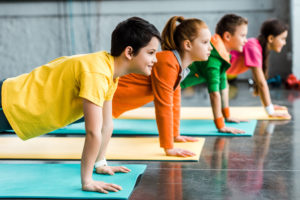A Secret Ingredient to Academic & Social Success: Exercise

What if I told you that there is a free and abundant resource that will help your child excel in school, have better relationships, and even help keep ADHD in check? You might say I'm full of it or that I'm touting some sort of a quick fix that is too good to be true. Well, it is true.
I'm talking about exercise.
All parents want their children to do well academically and socially, and exercise is a powerful tool for helping kids excel across all areas of their lives. Simply put, exercise activates critical pathways and processes in the brain that lead to better focus, improved learning of information and skills, and regulation of intense emotions.
Exercise and ADHD
Most children with ADHD are treated using stimulant medications, with positive results. However, there are those who don't tolerate the medications well, or whose parents want to pursue other modes of treatment. Stimulant medications increase the production and availability of two very important neurotransmitters in the brain: dopamine and norepinephrine. According to John Ratey, MD the author of best selling books Spark and Driven to Distraction regular exercise also raises base levels of dopamine and norepinephrine in the brain.
Exercise and Learning
When children learn new information and skills, they are making new connections in their brains. When novel stimulus and information is presented repeatedly, the brain starts to create and reinforce new pathways that solidify learning. Exercise supercharges learning in all areas of life because it releases a powerful neurochemical, BDNF, or Brain Derived Neurotrophic Factor, that has been dubbed “miracle grow for the brain.” This neurochemical helps the pathways of learning grow more quickly and more strongly.
Exercise and Managing Emotions
Difficult emotions like frustration, anger, fear, and sadness can be overwhelming for children. This phenomenon can be even worse for kids with ADHD.
Emotions like fear and anxiety are normal responses to stress. However, when a child doesn't have enough calming chemicals in the mix, emotional responses to stress catch fire and lead to emotional meltdowns. Regular exercise bolsters the brains ability to regulate emotions by increasing calming chemicals in the brain.
Tips for Getting Kids to Exercise
In order for an activity to produce the benefits discussed above, it should last for at least 30 minutes and increase your child's heart rate and respiration. That means lying on the couch tossing a rolled up pair of socks back and forth doesn't count. Get your kids up and in motion.
Here are 3 tips to help your kids exercise:
- Schedule it and make it part of your child/families routine. By making exercise just a standard part of your child's day or week, you are removing discussions about whether to exercise or not. Additionally, when you make it consistent and predictable, you increase the likelihood that it will happen.
- Make exercise novel. Activities that increase your child's heart rate and lead to an increase of positive neurochemicals can be as simple as a brisk walk for 30 minutes. However, your kids will get bored if that is all you offer them. It is important to mix things up. For example, you can go on family walks 2 times a week, send your kids to soccer 2 days a week, and engage them in cooperative play at the local park the other days. You don't need to sink hundreds of dollars into expensive swim classes and ballet to get the benefits of exercise. An active day on the playground can offer just as much benefit at no cost.
- Reward your kids for their efforts. Behavioral reinforcement is crucial to getting kids to behave in positive ways. It is also helpful in getting them to try new things. If your child is resistant to going on family hikes, playing with their friends at the park, or participating in an organized sport, you may want to introduce rewards. Start a sticker chart or a graph on the kitchen wall. When your child fills the chart, s/he gets a reward. You may have a child that needs daily rewards. In this case, it is easy to use screen time as a reward for exercising. It is important to limit screen time in general, so giving a child 30 minutes of computer time after exercise is a win-win.
Your children are counting on you to help them build a healthy relationship with themselves, and that includes exercise for a healthy life. Your efforts to get your kids moving will be repaid ten-fold when your little ones are excelling in school, making friends, and feeling positive.
Check out this short video of Diane and Elaine interviewing me about my video series for adults, Learn to Thrive with Adult ADHD. Exercise is one of the most popular sections in this video series, as it's also beneficial for adults with ADHD.

